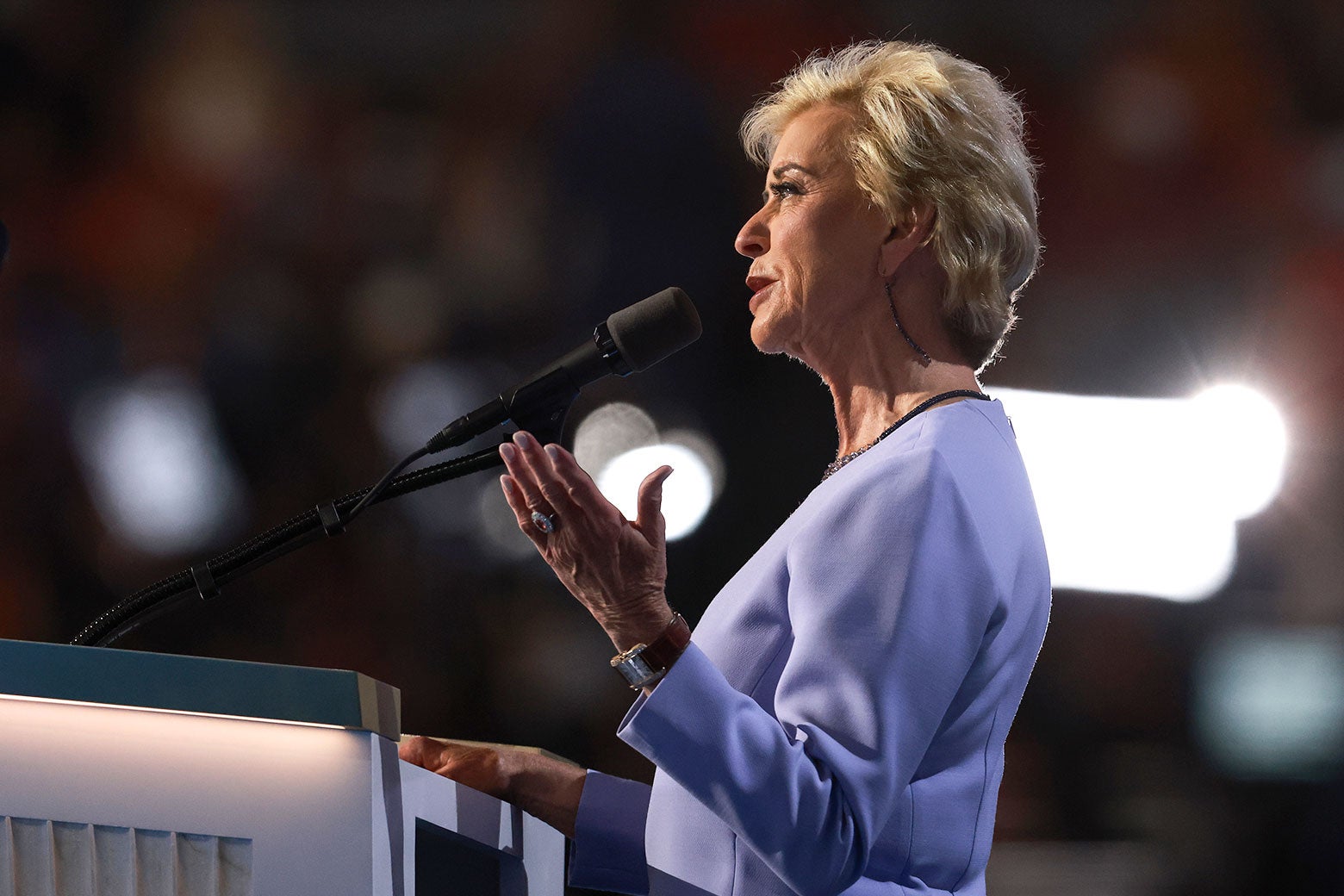Entertainment
Trump’s WWE Associate Has a Controversial Vision for American Schools

Donald Trump’s Cabinet Choices: Linda McMahon’s Vision for Education
What does a second Trump administration mean for the future of American education? As the supporters of the former president advocate a return to the educational ideals of the Founding Fathers, the implications of this could be alarming—not just for those on the left, but also for many conservative constituents as well.
With Linda McMahon’s recent nomination as Secretary of Education, there are clear continuities with Trump’s previous term. McMahon, who previously helmed the Small Business Administration, is a strong proponent of apprenticeships as a core reform. Her organization, the America First Policy Institute, emphasizes education as a means of fostering workforce innovation. Much like Betsy DeVos, Trump’s first Secretary of Education—who lacked experience in traditional public education—McMahon identifies as an “outsider” in this field, having led her career in the world of professional wrestling.
If confirmed, McMahon will likely push for two significant objectives cherished by many within the Trump base: diverting funds from public schooling to private education and steering more youth toward workforce readiness. This, they believe, aligns with the true educational vision of America’s early leaders. However, as a historian studying the evolution of public education in America, I worry that the outcomes would steer us toward a stark reality reminiscent of the past—not the optimistic narrative often portrayed by the MAGA movement.
Between the American Revolution and the Civil War, education was largely decentralized. Without stable funding and structure, schools were often chaotic and inadequate, with children often engaged in labor rather than learning. Sadly, it was a time when many Black children, both enslaved and free, faced systemic barriers to education.
For instance, in 1828, Rev. Peter Williams highlighted that only 600 Black students were enrolled in New York City’s public schools, despite a population of 2,500 Black youth who should have had access. Similar disillusionment echoed across demographics, as Horace Mann voiced concern in 1839 that numerous children, particularly in rural regions, had no educational options available to them.
Statistics paint a dire picture, with Mann noting that in Massachusetts, among 177,053 children, fewer than 95,000 could access schooling year-round. In rural areas, such as Georgia, the situation was far worse, with wave after wave of children denied education altogether. Anecdotes from that era illustrate heartbreaking realities, like a nine-year-old girl whose dreams of becoming a teacher were stifled by limited schooling and economic hardship.
Private schooling was sparse, with only a few thousand children able to access such options even in urban areas. Families were forced to pay exorbitant tuition rather than benefit from the public funding necessary for widespread quality education. The reality was further grim for working children, whose labor often took precedence over their schooling.
The historical backdrop reveals that apprenticeships were once regarded as a viable educational path toward successful careers. However, for many, especially those who were poorer or nonwhite, these arrangements were exploitative, reducing education to a means of maintaining servitude rather than facilitating learning.
Fast forward to the present, child labor protections are more stringent today, though vulnerabilities still exist. Companies often seek cheaper labor forces, potentially exposing marginalized youth to precarious work situations. In this context, a McMahon-led Education Department might unshackle employers further, leaving children—especially those already at a disadvantage—at the mercy of employers motivated more by profit than by educational duty.
Moreover, McMahon is expected to advocate for initiatives that fund scholarships for both public and private school expenses. This approach mimics efforts seen in states like Texas, where Governor Greg Abbott’s recent push for voucher programs has ignited significant opposition even among fellow Republicans. Some fear such reforms risk creating educational deserts, particularly in rural areas where public funds are diverted away from schools that need them the most.
Rural conservatives in Texas have recognized that these schemes could leave them with dwindling public school resources and little recourse in terms of accessible private options. In short, the vouchers insufficiently cover actual tuition costs and create a bleak outlook for many families reliant on public education.
Across the board, Americans from various political backgrounds share a reliance on public schools as essential institutions. Years of trial and error have taught us that only fully funded public schools can ensure equitable education for all. The notion of “choice” becomes meaningless if families are unable to afford alternatives, and depending on employers for education could lead to stark inequalities.
In essence, a McMahon-led Education Department may overlook these crucial lessons, potentially resulting in significant harm to our children and the broader society. As we navigate these turbulent waters, a united understanding of the value of public education might just be what we need to steer clear of regressive policies and ensure a brighter future for all students.
